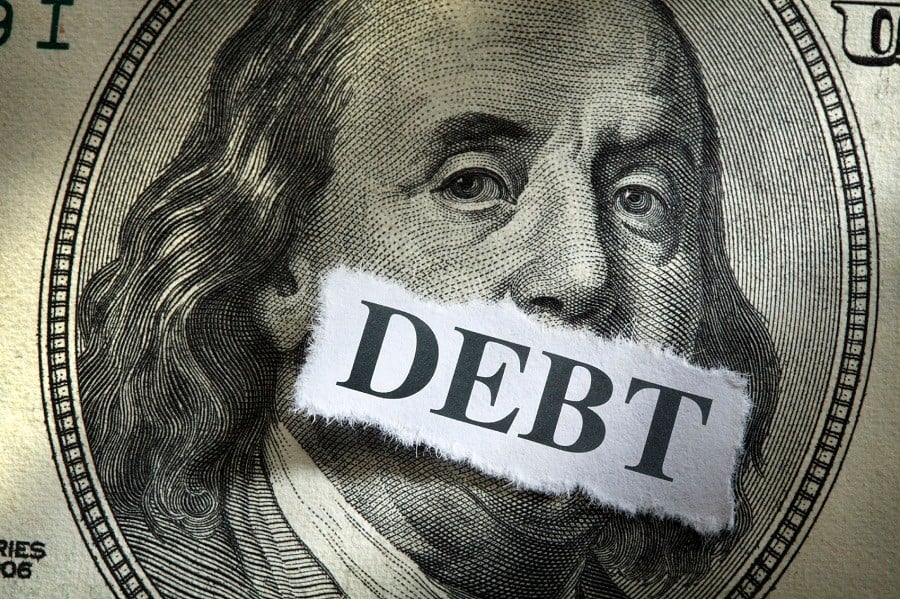

Americans who were dreading the burden of resuming student-loan repayments in February got a reprieve from President Joe Biden, but they aren’t feeling entirely at ease yet.
“That’s a huge relief for now. But it still interrupts my ability to plan long term,” said Chloe Cross, 29, who works in the film and television industry in Los Angeles and owes $32,000 in federal student loans. “I keep thinking he has the plan to cancel more long-term debt but it’s so messy. I’m exhausted and it’s like our lives are pawns. We’re here for them to play with and sacrifice.”
Cross was speaking after Biden last month announced the extension of federal student loan forbearance, giving borrowers — whose $1.6 trillion in debt remains an overhang on the economy — until May 1 to start repayments. It’s the second such extension and comes as the omicron variant of the Covid-19 virus has forced some businesses to close over the holidays, and consumers to pull back on spending and going out.
“It’s just kicking the can down the road, really,” said Bloomberg economist Yelena Shulyatyeva. “At some point, the administration will have to make a decision of what to do with student debt.” She noted that the latest action would likely add to the savings consumers have accrued from government transfers over the past two years of the pandemic.
Student loans have been the fastest-growing debt category in the U.S. over the past decade as more Americans seek higher education and school costs accelerate. About one in eight people in the U.S. currently have student loans, with the federal total skyrocketing to a record $1.6 trillion in the third quarter this year. Some groups, including Black Americans and women, are more likely to hold school-related debt.
The economic drag caused by student loans has prompted policy makers to call for broad relief, and former presidential candidate Bernie Sanders even called for a cancellation of all student debt. Studies have found that it can delay homeownership, marriage, having kids and attending a higher-degree program.
“I hope between now and May, things drastically improve or they come up with a solution, whether that’s slashing interest rates on loans or some sort of loan forgiveness,” said Emily Courter, 27, from New Hampshire, who owes $350 a month in federal loan payments.
Borrowers also generally struggle to pay student-debt back: even pre-pandemic, 1 in 5 with school-related debt were behind on payments. While the majority of the debt is held by those in their 30s, it tends to follow people late into life with $130 billion held by people over the age of 60, according to Federal Reserve data.
The Biden administration’s extension is set to help 41 million people save $5 billion each month, reducing the risk of delinquency and default, the Education Department said in a statement last month. Those borrowers are relieved, but still concerned about May 1, when the suspension is lifted.
About 90% of school loan debt holders aren’t financially stable enough to resume payments, according to one study from the Student Debt Crisis Center.
While the original 2020 pause made sense, the continued extensions don’t have a means or income test and don’t limit the relief to only those who need it, according to Jason Delisle, a senior policy fellow in the Center on Education Data and Policy at the Urban Institute.
“At this phase, we should think about targeted assistance rather than this very broad approach and it’s creating a lot of windfall benefits,” Delisle said. “Policy makers have had plenty of time to come up with some sort of alternative.”
Even so, for 36-year-old Mel Mills, a freelance digital marketer who works for Wayne State University, the latest news is a godsend. He owes more than $100,000 in student debt, about five times the U.S. average.
While the majority of his debt is private, he’ll be using the extra months of cash saved from the government loans to pay for a leaky roof and add to savings.
“Anything that puts more money back in your pocket — even for the short term — it’s relieving,” he said. “I know that whatever I owe is still coming due but it gives me more time to prepare and to just get my footing.”

The Treasury Secretary's suggestion that Trump Savings Accounts could be used as a "backdoor" drew sharp criticisms from AARP and Democratic lawmakers.

Changes in legislation or additional laws historically have created opportunities for the alternative investment marketplace to expand.

Wealth managers highlight strategies for clients trying to retire before 65 without running out of money.

Shares of the online brokerage jumped as it reported a surge in trading, counting crypto transactions, though analysts remained largely unmoved.

President meets with ‘highly overrated globalist’ at the White House.
Orion's Tom Wilson on delivering coordinated, high-touch service in a world where returns alone no longer set you apart.
Barely a decade old, registered index-linked annuities have quickly surged in popularity, thanks to their unique blend of protection and growth potential—an appealing option for investors looking to chart a steadier course through today's choppy market waters, says Myles Lambert, Brighthouse Financial.
